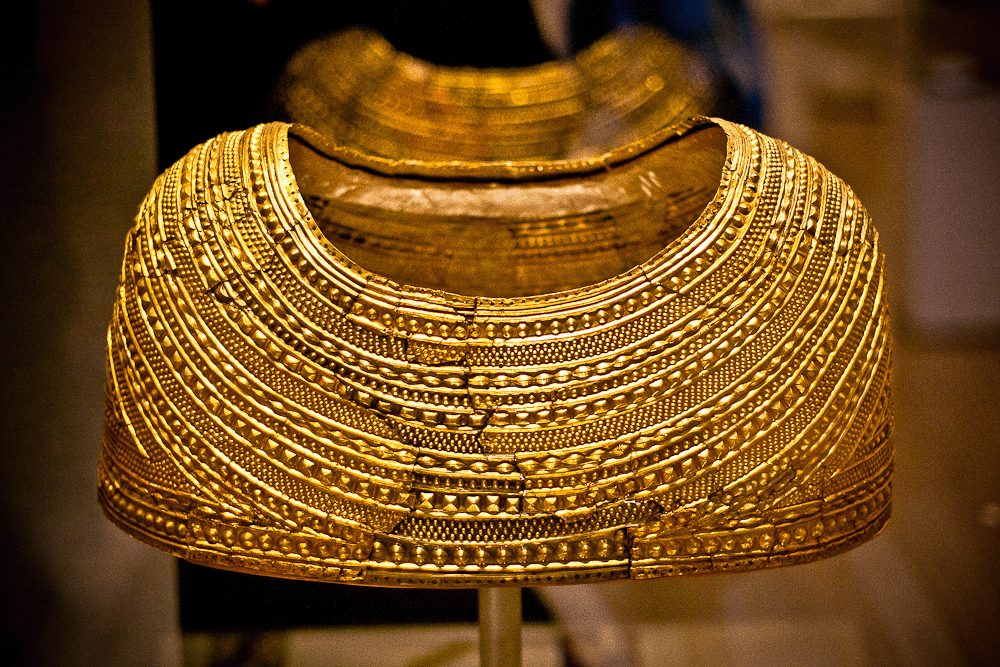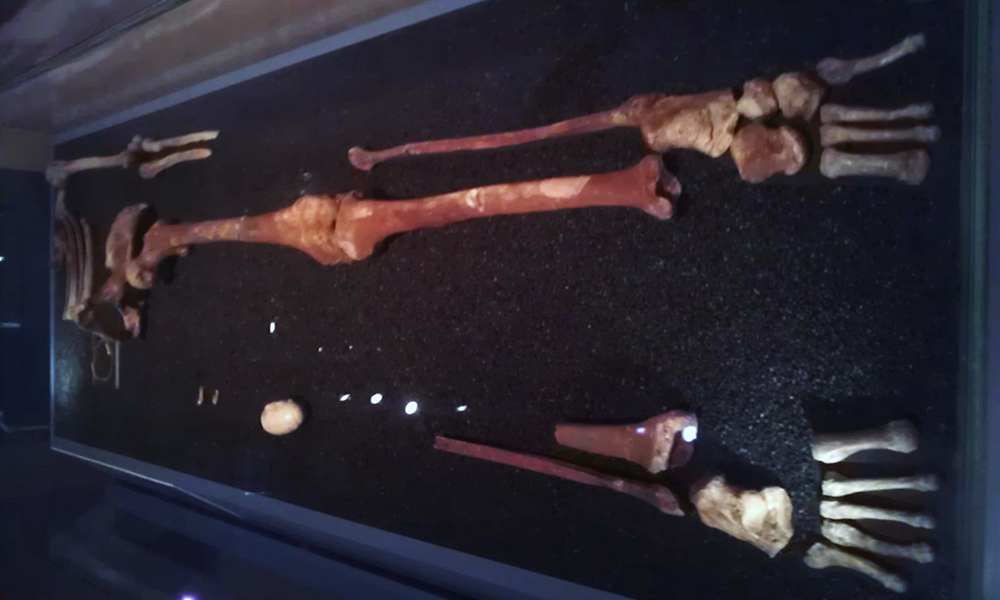The British Museum continues to ignore pleas for the return of Welsh artefacts despite numerous demands from politicians and citizens alike

The gold glimmers brightly drawing you in, delicate bands of decoration wrap the entire bodice, over four thousand years old and a true piece of Welsh history: The Mold Gold Cape. Discovered in 1833 in a small town in Northern Wales where it draws its name, the cape is an impressive example of Welsh Bronze age craftmanship.
Yet, if you wanted to see it you would need to leave Wales altogether and take a trip to the British Museum. Similarly, The Red “Lady” of Paviland was discovered near Swansea. Initially thought to be female, the skeletal remains were later identified as a male hunter-gatherer dating back to the last Ice Age from over 35,000 years ago. It is currently housed in the Natural History Museum in Oxford.
These are just two examples of historic artefacts that are currently on display outside of Wales among nearly a dozen. It’s not surprising many call for these items to be returned back to Wales where they come from.
Plaid Cymru politician Heledd Fychan has been vocal about the the need for the items to be returned. “Both artefacts were discovered prior to the establishment of Amgueddfa Cymru (Museum Wales), and it is inconceivable to me that they haven’t permanently become part of our nation’s collections subsequently. They tell a key part of our story as a nation, and should be here in Wales.”
However, a British Museum spokesperson told Sky News the Mold Gold Cape is viewed by 6 million people per year and is a star piece in the museum’s collection. They state the artefact has been on loan to both Wrexham Museum and the National Museum Wales in Cardiff in the past 10 years.

Rachel Evans, Museum Development Officer for Conwy Culture Centre believes returning artefacts to the Welsh capital is still not good enough. “A lot of things that people deem important… they go to Cardiff. So say the Mold Gold Cape was returned, it would go to Cardiff probably and then the people who live near where it was found, people who have ancestors on that land, they are probably not likely to go down to Cardiff to see it.”
Rachel cites the powerful sense of community present in places like Mold as one of the reasons to return artefacts to their hometowns, “It would be nice to have it back in Wales… so people from the local area where it was found were able to see it. Because Welsh people feel very strongly connected to the land and area where they were brought up.”
However, Rachel also sees the importance in the public having access to these artefacts.“Say someone is visiting the UK on holiday and they can only go to London for a week or so, they can see a bit of Welsh history in the British Museum, even though they haven’t got time to actually come out to Wales. So I think I can see it from that perspective as well.”
In spite of that Rachel does want to see the return of artefacts that were discovered in Conwy. Such as the Celtic Whetstone which is a small detailed figure carved out of stone and the magnificent Capel Garmon Firedog, this iron stand with two opposing horned animal heads is suggested to be an offering to a pagan god of the Celtic world. Currently only a replica resides in Wales.

Rachel argues people should be able to see what their ancestors created, “It would be nice for local people to be able to see that other people who lived on this land thousands of years ago made this little figure. It’s so small and we’ve got plenty of room to have something like that in the Conwy Culture Centre. I can think of no reason why we wouldn’t have that.”

However, the call for artefacts to be returned is not just a Welsh issue. Many different countries call for the return of precious artefacts that are currently housed in Wales. For example, the Clive Collection at Powis Castle has been the subject of divisive debate. A portion of the artefacts were looted during the British colonial period in India.
Heledd explains a time she was present for the repatriation of extremely important Maori artefacts.“When I worked for Amgueddfa Cymru, I was honoured to witness a very special ceremony at National Museum Cardiff when the bones of twelve maori people left the national collections to be returned home, to the Museum of New Zealand Te Papa Tongarewa.”
Despite these calls for the repatriation of artefacts housed in the British Museum, Prime Minister Rishi Sunak has affirmed there are “no plans” to change the law. The 1963 British Museum Act which prevents the institution from giving away objects from its collection.
Welsh museums are taking a different approach and are keen to rectify past errors Heledd explains, “If we’re calling for the repatriation of key Welsh artefacts then it’s only right that there should be active dialogue with other nation’s about their artefacts here in Wales. And I’m pleased that Welsh museums have been actively involved in the repatriation of objects, and that this remains a live issue.”
